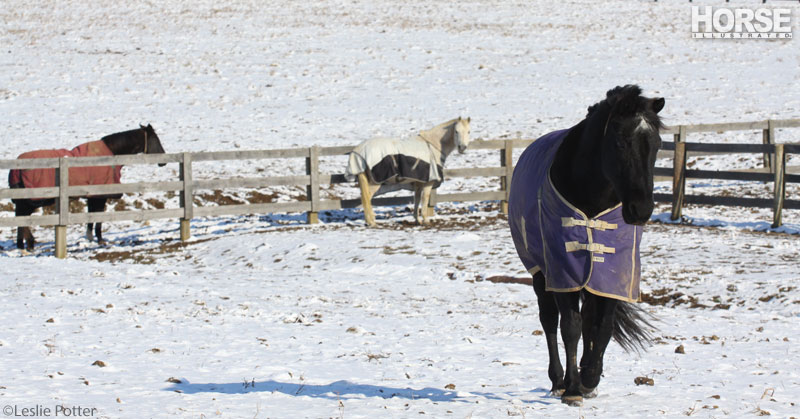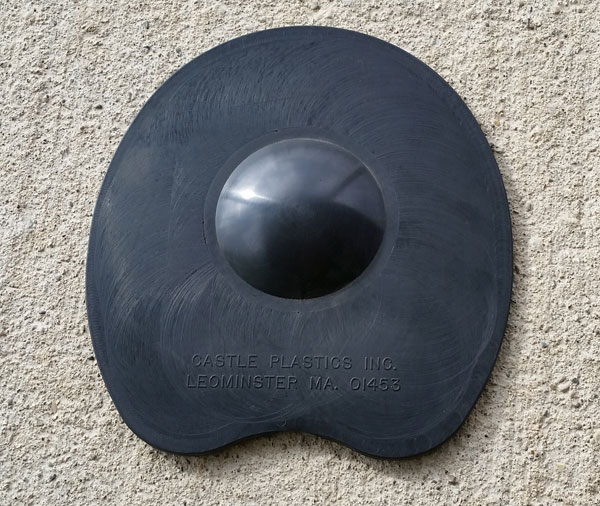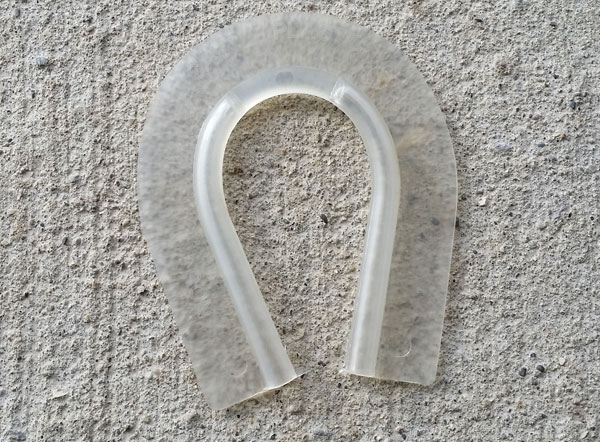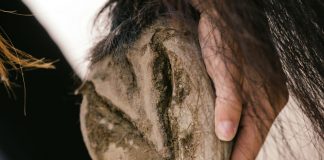For horse owners in colder locales, keeping horses safe while snow and ice blanket the ground can be a tricky situation. Whether you ride outside year-round or you just want to make sure your horses can be turned out safely, it’s worthwhile to consider shoeing options other than those used during warmer months.

Short-lived Remedies
Traditional keg shoes can gather packed ice and snow, forcing the horse to walk on slippery high heels and adding stress to tendons and ligaments. If you’ve ever tried to dislodge one of these rock-hard icy blocks, you know how difficult it can be. Many a hoofpick has been bent and many a swear word uttered in futile attempts to remove these cement-like formations. While they do eventually melt if the horse is brought inside, it’s not the most comfortable or safest way to spend the night—especially if a horse must walk across a cement or asphalt aisle to get to the stall, where they will have an increased risk of slipping.
Many horse owners have heard of home remedies like slathering the sole of the hoof with cooking spray or petroleum jelly to prevent snow and ice buildup, but these tricks work for only a short amount of time (like the trip to the pasture), if at all.
Anti-Snow Shoes
While letting horses who spend the majority of their time outside go barefoot would be his preference, Dave Scheffel of Dave Scheffel Horseshoeing in Paris, Ky., acknowledges that this is not possible for many people, either because their horses need shoes to be comfortable or because the horses need shoes to stay in work.
Dave shoes all sorts of performance horses, including Saddlebreds, reining and working cow horses, hunters and jumpers, as well as trail and pleasure mounts. His shoe of choice for those in snowy climes is a St. Croix light rim shoe, which has an outside bevel for easy breakover in all directions. This shoe is also beveled on the inside for easier and faster clean out—perfect for performance horses and those turned out full-time. The only negative to this shoe, says Dave, is that it can catch dirt in the crease—a great thing for traction, but can be a little harder on those horses with soundness or arthritis issues as the shoe “sticks” to the ground a bit more.

Snowball Pad
Snowball pads (also known as “popper pads”) are full rubber pads with a large bubble in the middle that can be helpful at keeping packed snow out of hooves. This pad expands and contracts every time a horse puts weight on it, pushing snow out of the sole area so it can never build up. Care must be taken with these shoes as dirt, snow and other debris can work its way under the pad and form a solid lump, causing sole pressure and therefore discomfort.

Snowball Pad
A snow rim pad is a hollow tube placed between the shoe and the hoof wall that leaves the sole open, unlike full snowball pads. However, this tube also expands and contracts as weight is placed on the hoof. The ends of this tubing may need to be capped to prevent snow, slush and debris from working its way into the tube and negating the ability of the tube to help shed snow from the sole. Frozen or dirt-filled tubing can also create pressure and bruise the foot.
Traction Control
Horse shoes can have borium (tungsten carbide) applied to them to improve grip. It is traditionally applied at four points on the shoe at the toe and the heel. While borium is great for hard surfaces like asphalt, cement and ice because it bites into the surface, notes Dave, it does not have as significant anti-slip properties on loose footing, in the arena or on snow. On hard surfaces, borium stops the natural slide of a hoof as it lands, therefore creating additional strain on tendons, ligaments and joints.
Many of these options can be used in conjunction to give a horse the best possible chance to keep snow from accumulating in his hooves and allowing him to move as freely as possible both during turnout and during work.
Liked this article? Here are others you’ll enjoy:
The Barefoot Life
10 Winter Health Care Mistakes to Avoid
Winter Weather Can Mean Wet, Soft Hooves






great info
Interesting.